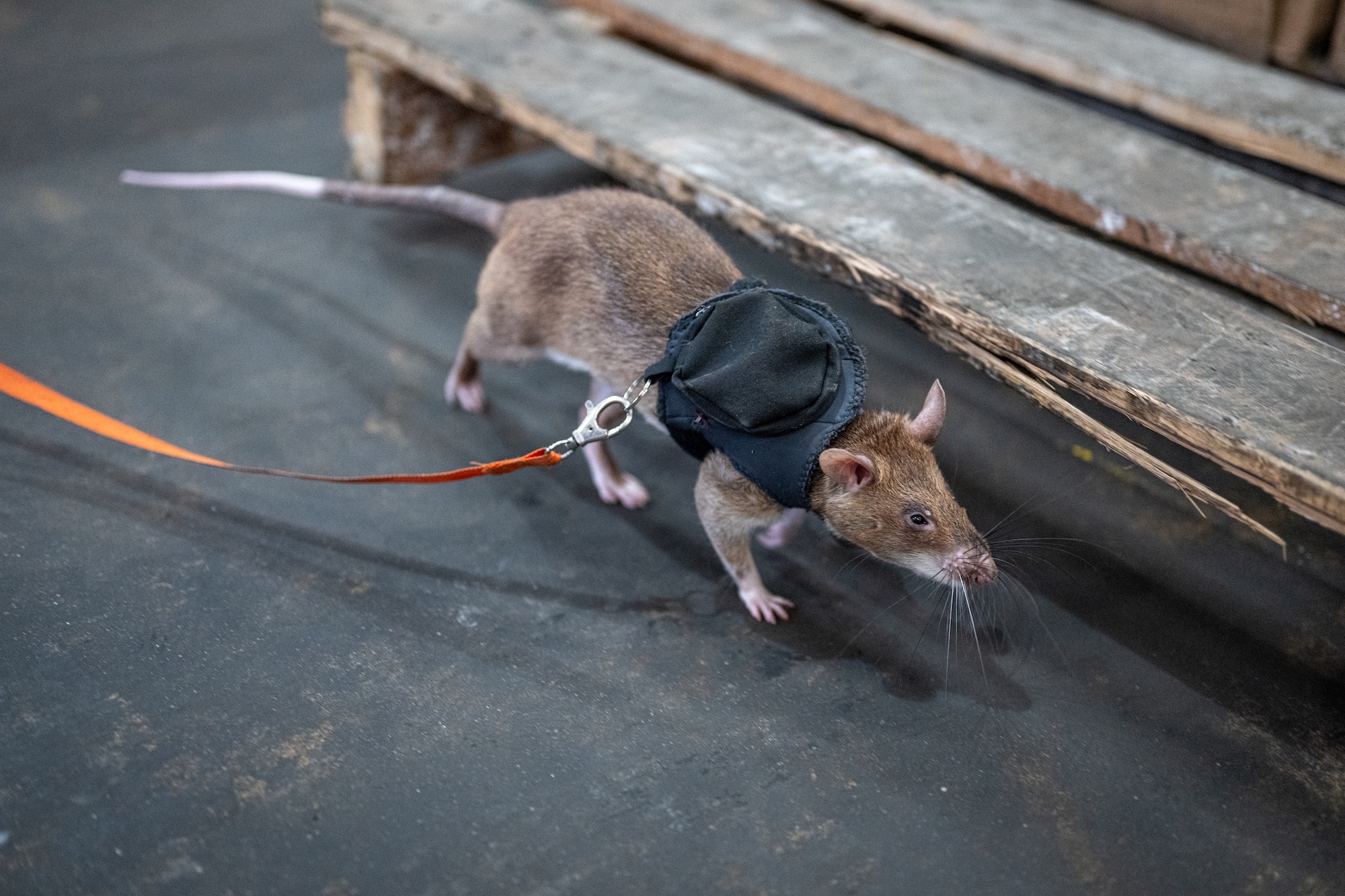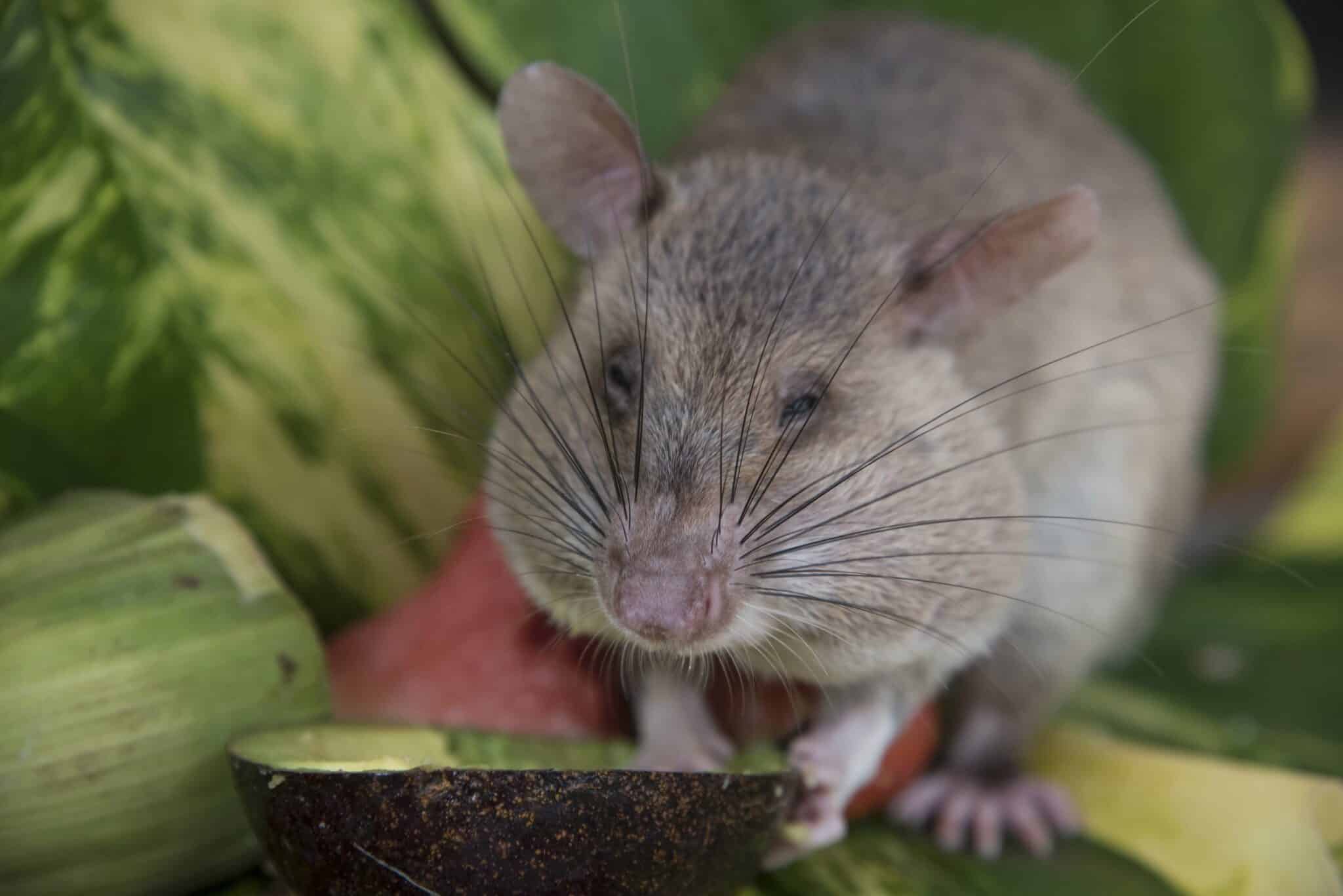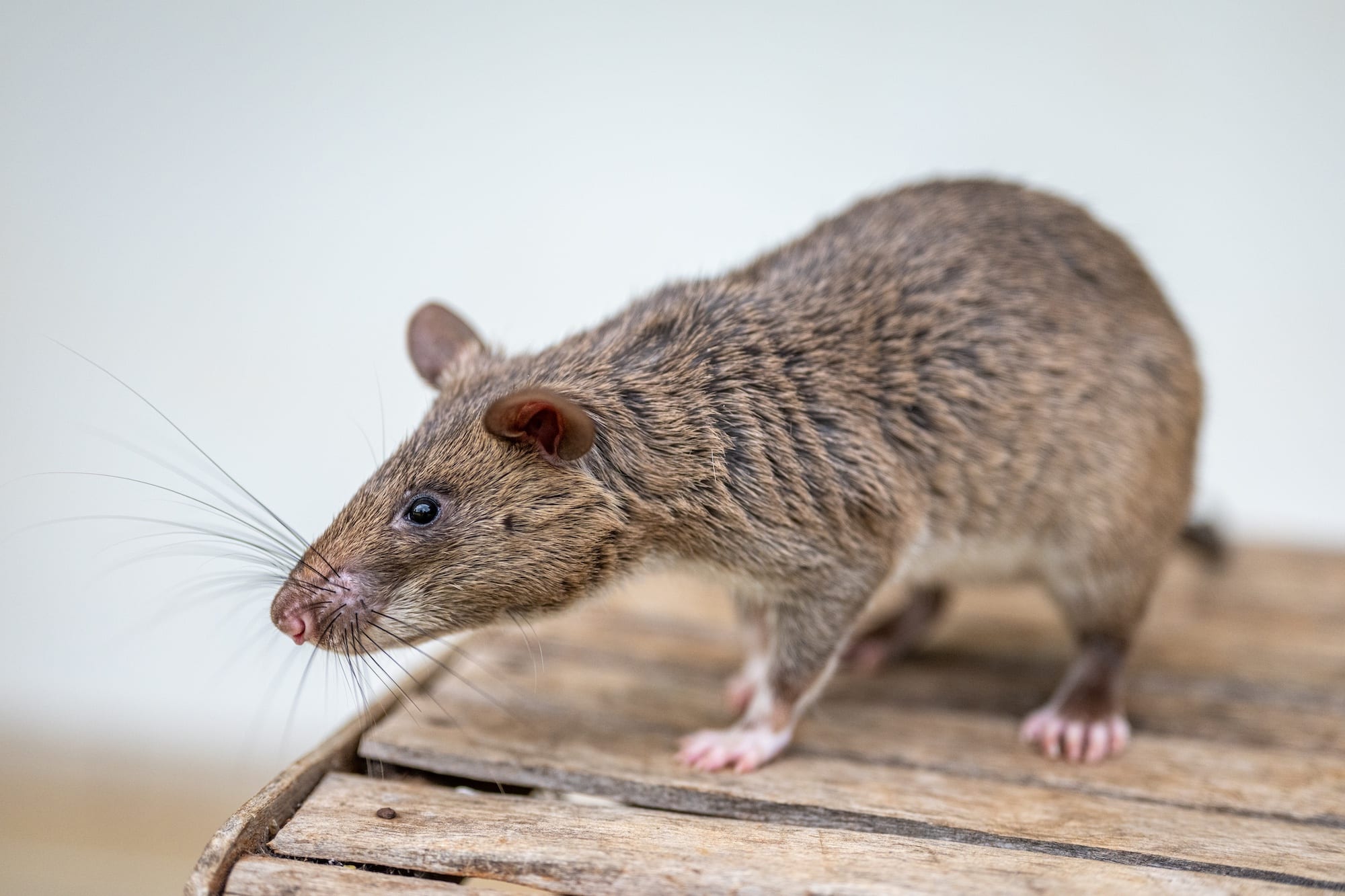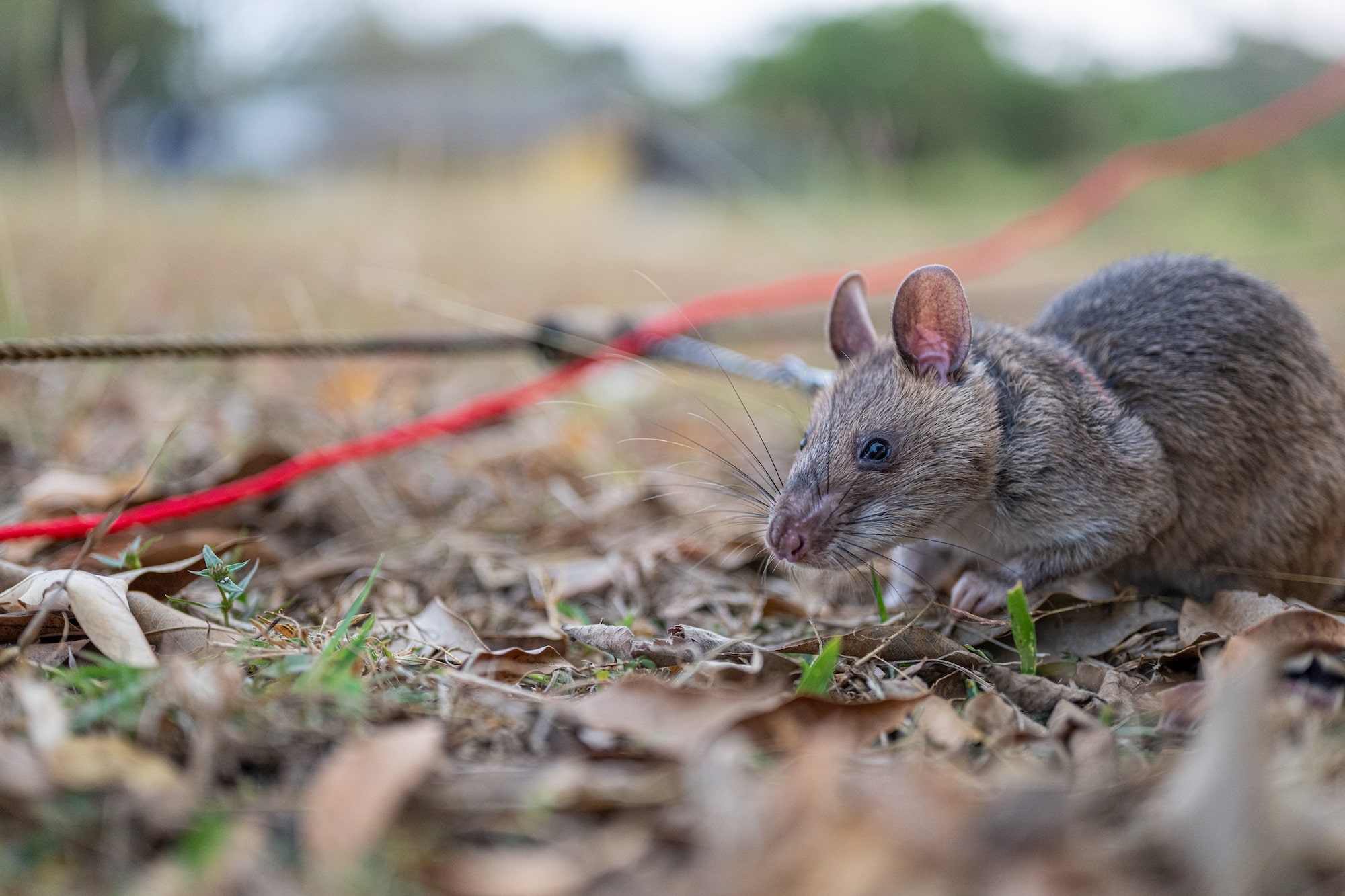Understanding the Species Behind APOPO’s HeroRATs
At APOPO, our scent detection rats are affectionately known as HeroRATs, a name that reflects both their intelligence and their lifesaving work. But beyond the nickname lies an interesting scientific story — these extraordinary animals belong to a specific species, Cricetomys ansorgei, commonly known as either the African giant pouched rat or the southern giant pouched rat.
The Science Behind the Name
In biological classification, species names follow a universal system: the genus (capitalized) and species (lowercase), both written in italics — Cricetomys ansorgei in this case. This system ensures that scientists everywhere refer to the same species consistently, regardless of local language or regional naming preferences.
However, when it comes to common names, things get more complicated. Across scientific papers, online resources, and media reports, Cricetomys ansorgei is sometimes called the African giant pouched rat, and other times the southern giant pouched rat. Both are technically correct, but at APOPO, we have chosen to standardize one name: African giant pouched rat.
Why APOPO Uses “African Giant Pouched Rat”

APOPO prefers the term African giant pouched rat because, as we see it, it best represents the species’ continental range and reflects the Tanzanian origins of our training and research programs. Our main training and research center is based at the Sokoine University of Agriculture in Morogoro, Tanzania, where generations of these intelligent rodents have been bred and trained to save lives.
The African giant pouched rat is one of several large pouched rat species found in sub-Saharan Africa, alongside Cricetomys gambianus, Cricetomys kivuensis, and Cricetomys emini. It was only after detailed genetic and morphological studies that Cricetomys ansorgei was confirmed as a distinct species. This recognition helped ensure that research, breeding, and training programs like APOPO’s could focus on the right species, one that combines adaptability, calm temperament, and exceptional scent detection ability.
APOPO continues to use Cricetomys ansorgei simply because it is the species naturally found in Tanzania, where our work began. Its availability, temperament, longevity, and adaptability made it the practical and biological foundation of all subsequent APOPO programs.
Not the “Gambian” Pouched Rat
Many people mistakenly assume that APOPO’s HeroRATs are Gambian pouched rats (Cricetomys gambianus). The confusion is understandable: for many years, all giant pouched rats were grouped under that single name.
However, genetic research has since shown that Cricetomys ansorgei and Cricetomys gambianus are distinct species. They differ in their geographic distribution, morphology, and even subtle behavioral traits.
- Cricetomys gambianus is typically found in West Africa, including Gambia, Senegal, and parts of Nigeria.
- Cricetomys ansorgei, on the other hand, is native to East and Central Africa, including Tanzania, where APOPO’s breeding and training programs are based.
- Physically, C. ansorgei tends to have a slightly shorter tail and different skull proportions, and researchers have observed variations in coat color and body size across their ranges.
A Rat by Any Other Name

The term “pouched rat” refers to the cheek pouches these animals use to carry food, much like hamsters. Native to the African continent, Cricetomys ansorgei is a nocturnal, social, and highly trainable rodent with an outstanding sense of smell.
Although the word “rat” can carry stigma, these animals are clean, gentle, and capable of complex learning. At APOPO, they are trained through positive reinforcement to perform humanitarian work, detecting the scent of explosives in buried landmines and identifying tuberculosis (TB) in human sputum samples.
Despite their name, African giant pouched rats are not closely related to the rats most people picture, such as the Norway rat (Rattus norvegicus) or the black rat (Rattus rattus), which are widespread across Europe, Asia, and the Americas. Those familiar “city rats” belong to the genus Rattus, while APOPO’s HeroRATs belong to the genus Cricetomys, a distinct lineage found only in Africa. The similarities in body shape and behaviour arise through convergent evolution — when unrelated species independently develop similar traits because they adapt to comparable environments or ecological roles. In other words, they look alike because both fill the “small, intelligent, opportunistic mammal” niche, not because they share a recent common ancestor.
Still, both Rattus and Cricetomys are members of the Rodentia order, meaning they share the characteristic continuously growing incisors that define all rodents. The result: two very different kinds of “rats,” united only by name and teeth.
Why Cricetomys ansorgei is Perfect for APOPO’s Programs

There are solid biological reasons why this species is ideal for APOPO’s scent detection programs:
- Powerful sense of smell – able to distinguish target scents among thousands of background odors.
- Lightweight body – allowing them to safely cross minefields without triggering explosives.
- Calm, curious nature – making them responsive to training and reliable in field conditions.
- Long working lifespan – often up to eight years in captivity, with some of APOPO-s older retired rats even reaching the age of 10 and over.
Combined with APOPO’s humane and science-driven training methods, these traits make the African giant pouched rat uniquely effective in humanitarian detection.
From Species to Symbol
Choosing the name African giant pouched rat also reflects APOPO’s broader identity. The species is African-born, just like APOPO itself, yet its impact is global. Our HeroRATs, bred and trained in Tanzania, now work to clear landmines in Cambodia, Angola, and Azerbaijan and to detect tuberculosis in Tanzania and Ethiopia.
The name emphasizes this duality — rooted in Africa, reaching the world. It’s a reminder that innovation and compassion can emerge from unexpected places.
A Name That Carries Meaning
Scientific names give precision. Common names give familiarity. APOPO’s choice to call Cricetomys ansorgei the African giant pouched rat bridges both — honoring the animal’s taxonomy while recognizing its cultural and geographic identity.
Whether you know them as Cricetomys ansorgei, African giant pouched rats, or simply HeroRATs, one thing is certain: these remarkable creatures prove that even the smallest animals can make a massive difference.

